 In a highly digitized environment, identity theft poses a great risk if the necessary safeguards are not utilized. It is paramount that businesses and consumers are made aware of the massive repercussions a data breach of patient info can result in--such as identity theft of patients, as well as financial damage to and reputation loss of healthcare organizations. Current HIPAA regulations mandate that if a data breach occurs, then the organization responsible for that breach must reported it to Health and Human Services (HHS), pay thousands or millions of dollars in fines, and may have to report the breach to the media. However, if your organization’s data is securely encrypted, you will be exempt from these repercussions.
In a highly digitized environment, identity theft poses a great risk if the necessary safeguards are not utilized. It is paramount that businesses and consumers are made aware of the massive repercussions a data breach of patient info can result in--such as identity theft of patients, as well as financial damage to and reputation loss of healthcare organizations. Current HIPAA regulations mandate that if a data breach occurs, then the organization responsible for that breach must reported it to Health and Human Services (HHS), pay thousands or millions of dollars in fines, and may have to report the breach to the media. However, if your organization’s data is securely encrypted, you will be exempt from these repercussions.
Despite Health Insurance Portability and Accountability Act (HIPAA) security laws, healthcare data breaches are on the rise. According to the Ponemon Institute, the healthcare industry has lost more than $6.5 billion dollars due to data breaches.
Ponemon also identifies the three most common culprits of healthcare data breaches: stolen or lost equipment, third-party mistakes, and employee errors, indicating that many data breaches stem from unintentional mistakes. Storing health information on mobile devices is also a common practice among health care organizations. However, 49% of the respondents reportedly do not take any steps to secure patients' information on those devices. A great example of an accidental data breach recently took place in South Carolina where a Medicaid employee transferred several spreadsheets of sensitive patient data to a personal email account. This kind of data breach could have exposed hundreds of thousands of patients to possible theft of Social Security numbers, Medicaid ID numbers, addresses, phone numbers, and birthdates.
A great example of an accidental data breach recently took place in South Carolina where a Medicaid employee transferred several spreadsheets of sensitive patient data to a personal email account. This kind of data breach could have exposed hundreds of thousands of patients to possible theft of Social Security numbers, Medicaid ID numbers, addresses, phone numbers, and birthdates.
Another alarming example took place at an Emory Healthcare storage facility where 10 back-up disks for an old computer were found missing. These disks contained protected health information (PHI) of more than 300,000 patients including patients' names, doctors' names, diagnoses, medical procedures and other privileged information protected under HIPAA.
As healthcare organizations face greater challenges in protecting massive amounts of patient data, the US federal government continues to strengthen security laws, regulations, and best practices. Due to the HITECH act of 2009, HIPAA compliances now requires more stringent steps to ensure full security of patient information.
As the CTO, IT Manger or System Administrator of your healthcare company, you have a critical task to accomplish. You cannot afford to waste time and money on legal battles that you can avoid in the first place. If you do experience a data breach, the emotional toll on your patients could result in lost clients and a tarnished company image.
Here is the good news: NIST-certified encryption and FIPS 140-2 certified encryption key management is at your fingertips! Townsend Security’s encryption solutions offer affordable possibilities that will fully protect your patients' records and allow you to avoid a breach notification in accordance with HIPAA/HITECH. You need a security technology with a strong encryption solution that is NIST certified and suitable to your server environment. If data is securely encrypted, data breaches don’t need to be reported and you and your patients are assured peace of mind.
For more information, download our podcast "Protect PHI and Manage Risk - HIPAA Compliance" and learn more about achieving Safe-Harbor status in the event of a breach and what is considered a data breach. Additionally, learn what to be aware of when selecting an encryption or key management solution.


 Any way you look at it, 2011 was a very bad year for database security. From the high-profile (and highly embarrassing) series of attacks on Sony's PlayStation Network, to the less-publicized Epsilon breach which was described by the
Any way you look at it, 2011 was a very bad year for database security. From the high-profile (and highly embarrassing) series of attacks on Sony's PlayStation Network, to the less-publicized Epsilon breach which was described by the 




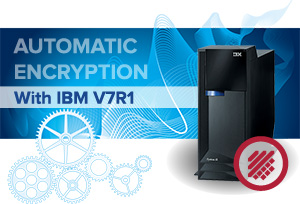 The newest version of the IBM i (AS400) operating system, V7R1, brings sophisticated new security tools from IBM’s larger systems to mid-range markets. These new features allow third-party companies such as Townsend Security to offer NIST-certified automatic AES encryption, so that you can now encrypt your sensitive data without application changes!
The newest version of the IBM i (AS400) operating system, V7R1, brings sophisticated new security tools from IBM’s larger systems to mid-range markets. These new features allow third-party companies such as Townsend Security to offer NIST-certified automatic AES encryption, so that you can now encrypt your sensitive data without application changes!


 Section 10 of PCI DSS requirements v2.0 states the need to track user activities, to be able to detect, prevent or minimize the impact of a data compromise. Because of the mere fact that most every application under the sun produces a log entry for when something goes amiss, you can also use that same log file as a security tool. It can provide a means of tracking and analysis when a possible data breach may be occurring as well as add crucial detail for investigative purposes. Now a smart criminal knows to cover their tracks at the scene of a crime, and they can do this simply by wiping out any log data that may exist. However if you’re capturing these logs in real time and sending them to a third party server, even the most savvy of crooks will be caught red handed.
Section 10 of PCI DSS requirements v2.0 states the need to track user activities, to be able to detect, prevent or minimize the impact of a data compromise. Because of the mere fact that most every application under the sun produces a log entry for when something goes amiss, you can also use that same log file as a security tool. It can provide a means of tracking and analysis when a possible data breach may be occurring as well as add crucial detail for investigative purposes. Now a smart criminal knows to cover their tracks at the scene of a crime, and they can do this simply by wiping out any log data that may exist. However if you’re capturing these logs in real time and sending them to a third party server, even the most savvy of crooks will be caught red handed. The security breach involving Global Payments, a US credit card processing company is still in complete disarray months after the breach took place. A little over a month ago, it was reported that a maximum of a staggering 10 million credit card numbers could have been apprehended during a five week period starting in late January. Global Payments reluctantly admitted to being the victims countering with a figure of 1.5 million credit card numbers stolen. While there isn’t any reason why any company should have this happen to them, it is a growing trend to claim a bit of ignorance on the matter, or at least try to redistribute the blame.
The security breach involving Global Payments, a US credit card processing company is still in complete disarray months after the breach took place. A little over a month ago, it was reported that a maximum of a staggering 10 million credit card numbers could have been apprehended during a five week period starting in late January. Global Payments reluctantly admitted to being the victims countering with a figure of 1.5 million credit card numbers stolen. While there isn’t any reason why any company should have this happen to them, it is a growing trend to claim a bit of ignorance on the matter, or at least try to redistribute the blame.
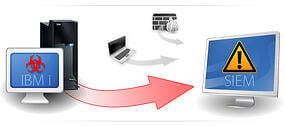 The Alliance LogAgent Solution for system logging on the IBM iSeries is able to grab log messages out of a variety of places such as your system's audit journal, (QAUDJRN), your history log (QHST), and system operator messages (QSYSOPR) and format them to either a standardized Syslog format, in this case RFC3164 or Common Event Format (CEF). Once formatted, we pass the messages over to the communications module that handles the transmission of the messages to your waiting log collection server using either the UDP, TCP or SSL/TLS protocol.
The Alliance LogAgent Solution for system logging on the IBM iSeries is able to grab log messages out of a variety of places such as your system's audit journal, (QAUDJRN), your history log (QHST), and system operator messages (QSYSOPR) and format them to either a standardized Syslog format, in this case RFC3164 or Common Event Format (CEF). Once formatted, we pass the messages over to the communications module that handles the transmission of the messages to your waiting log collection server using either the UDP, TCP or SSL/TLS protocol. 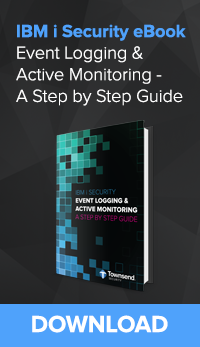
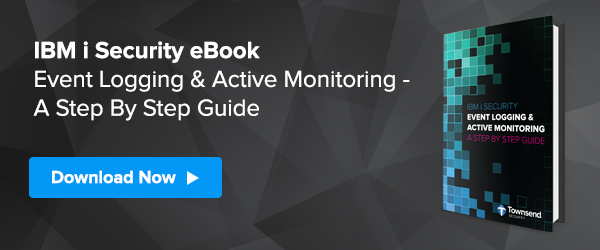
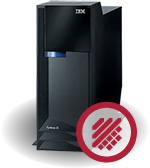 IBM announced recently the end of support date for V5R4. This has prompted many IBM i shops running this older OS to upgrade to a newer release - either V6R1 or V7R1. Traditionally, we have seen that most IBM i administrators upgrade just one release forward. In this particular case, we recommend going to V7R1. Not only is upgrading to V7R1 a fully supported path by IBM, there are security reasons. I recently sat down with Patrick Townsend, Founder & CEO, to discuss IBM i V7R1 and how Townsend Security can help organizations take advantage of FIELDPROC, a new feature that allows companies to encrypt their sensitive data without changing their applications.
IBM announced recently the end of support date for V5R4. This has prompted many IBM i shops running this older OS to upgrade to a newer release - either V6R1 or V7R1. Traditionally, we have seen that most IBM i administrators upgrade just one release forward. In this particular case, we recommend going to V7R1. Not only is upgrading to V7R1 a fully supported path by IBM, there are security reasons. I recently sat down with Patrick Townsend, Founder & CEO, to discuss IBM i V7R1 and how Townsend Security can help organizations take advantage of FIELDPROC, a new feature that allows companies to encrypt their sensitive data without changing their applications.